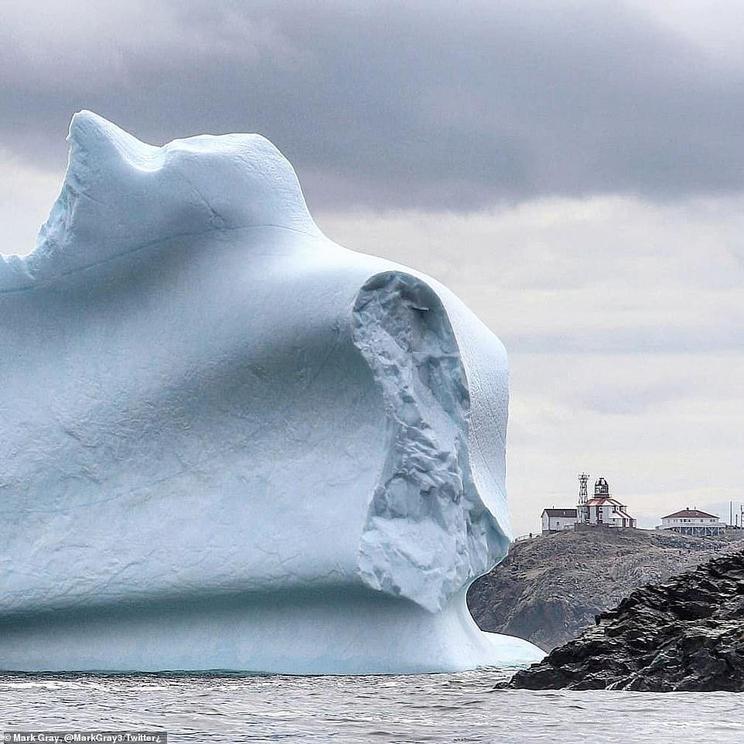Revealed:150-FOOT-TALL glacial masses floating through Canada's 'iceberg alley'
- An amateur photographer captured a varied mix of icebergs as they passed through 'Iceberg Alley' in Canada
- In the series of images, Mark Grey spotted shapes that resemble 'ice cream cones' and even a 'salad bowl'
- The icebergs pass through the corridor annually and have reached more than 2,000 in one season
An amateur photographer captured the breadth and versatility of icebergs from his vantage in what's known as 'iceberg alley.'
In a series of images from his home in Cape Bonavista, Newfoundland, photographer Mark Gray documented a procession of icebergs as they drifted by in the Labrador Sea through his personal Twitter account.
In one photo, Gray is able to snap a comparison picture showing one of the colossal floating chunks of ice next to the Cape's iconic lighthouse.
An amateur photographer captured the breadth and versatility of icebergs from his vantage in what's known as 'iceberg alley.' Above, a giant iceberg dwarfs Cape Bonavista's iconic lighthouse as it drifts through the region
'Our Cape Bonavista Lighthouse looks pretty small in comparison to this huge iceberg!' said Gray on Twitter.
In other photos, Gray points out icebergs that appear similar to a 'salad bowl,' ice cream cones, elephant tusks, and one which he dubs 'the lurker' for seemingly hiding behind a land mass.
The corridor through which Gray captured the Iceberg's journey across the sea has been dubbed 'Iceberg Alley' where seasonal bergs drift through during late spring or early summer.
The 'Alley' stretches from the coast of Labrador to the southeast cost of Newfoundland and attracts site-seers from all over who come to catch a glimpse of the massive natural structures by land sometimes boats that bring them up close and personal.
About 400 to 800 icebergs make it to the coast of Newfoundland every year but in some exceptional cases more than 2,000 have been recorded during one banner season in 1984.
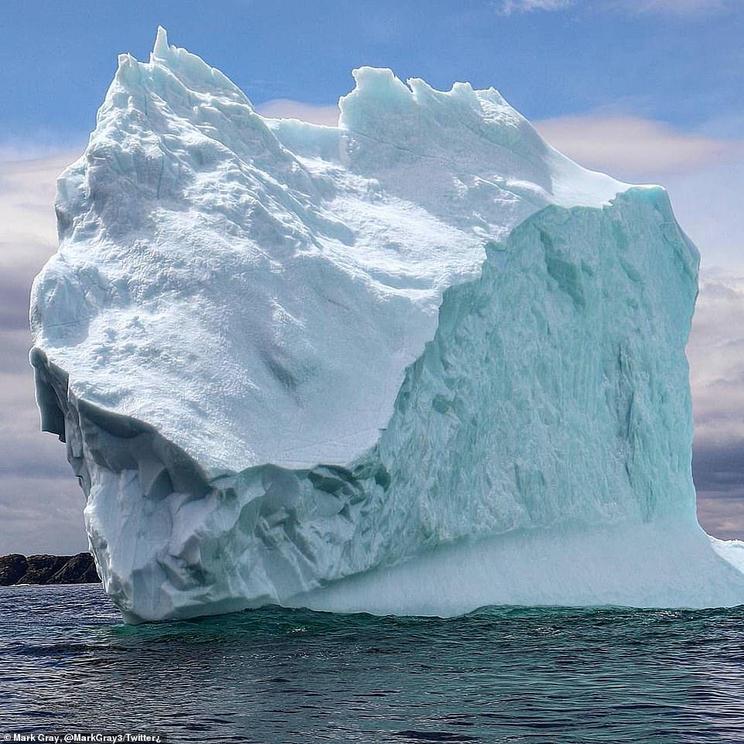 Icebergs come in various shapes and sizes, some small towering as high as 150 feet. Between late spring and early summer the icebergs float through the Labrador Sea, where visitors flock to get a glimpse
Icebergs come in various shapes and sizes, some small towering as high as 150 feet. Between late spring and early summer the icebergs float through the Labrador Sea, where visitors flock to get a glimpse
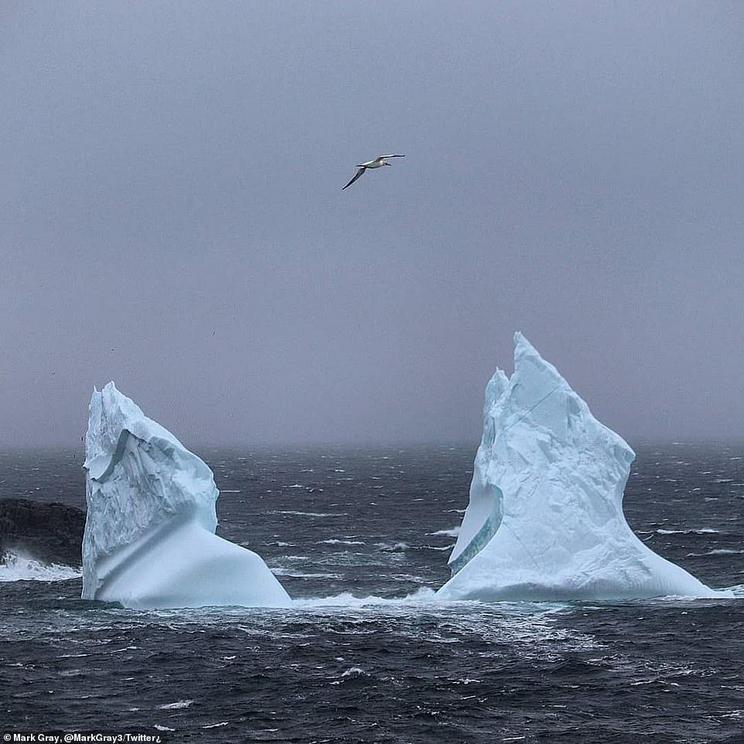 One glacier, Gray dubbed the 'salad bowl' for its unusual shape. The 'Alley' stretches from the coast of Labrador to the southeast cost of Newfoundland
One glacier, Gray dubbed the 'salad bowl' for its unusual shape. The 'Alley' stretches from the coast of Labrador to the southeast cost of Newfoundland
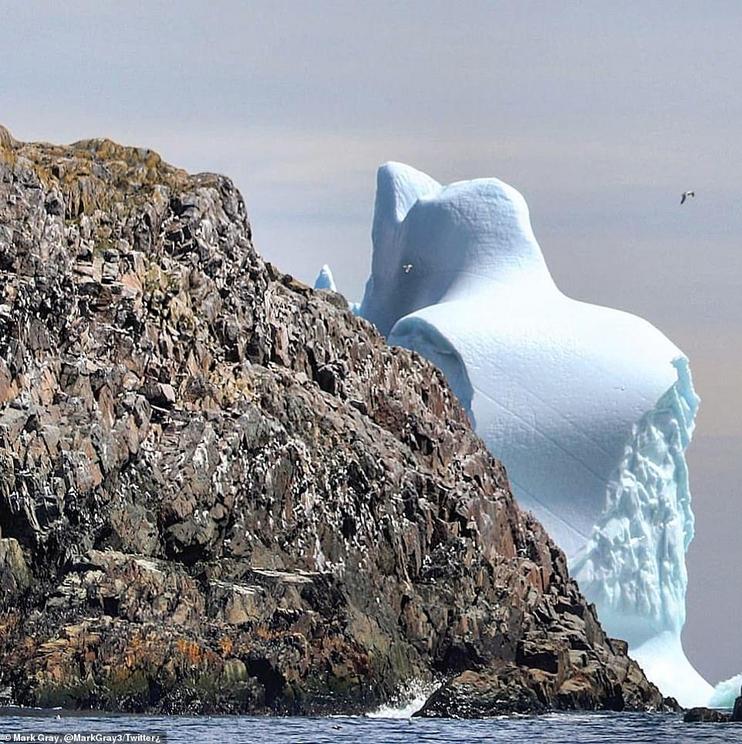 'The lurker' is what Gray called this particular berg as it looms behind a large rocky land mass. To get a close glimpse of the floating ice masses, some tourists even charter boats that get them up close and personal.
'The lurker' is what Gray called this particular berg as it looms behind a large rocky land mass. To get a close glimpse of the floating ice masses, some tourists even charter boats that get them up close and personal.
The icebergs themselves consist of 10,000 to 12,000-year-old ice and come mostly from glaciers in western Greenland.
They can span as high as 150 feet above water and come in versatile shapes like the ones captured by Gray, including arched, pyramidal, tabular, domed, blocks, and more.
According to Newfoundland's official tourism page, icebergs are sometimes so plentiful that locals use the fresh glacier water to make different cocktails that contain gin or vodka, as well as the popular 'iceberg beer.'
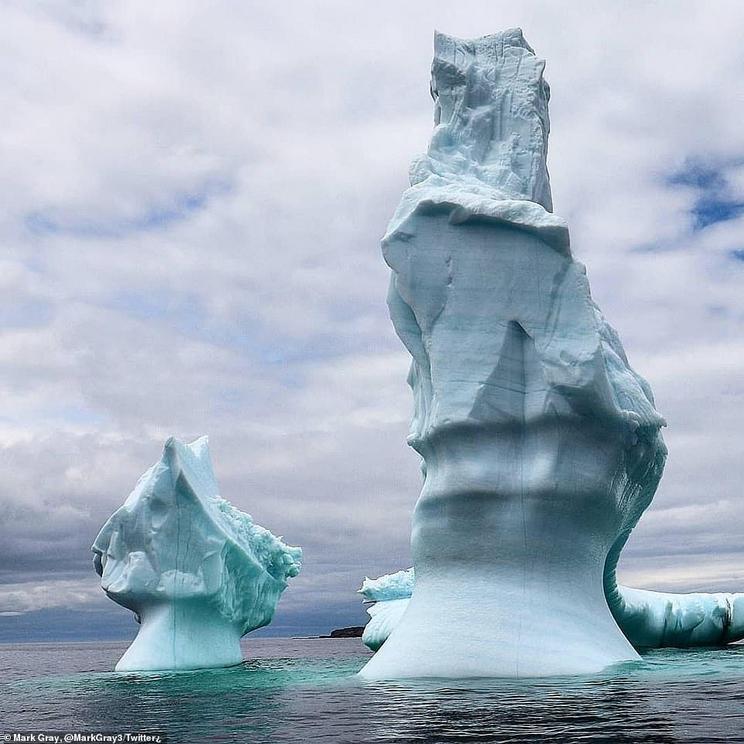 Gray compared the icebergs pictured above to ice cream cones, stating on his Twitter, 'Would you like a small or large ice cream cone? LOL.'
Gray compared the icebergs pictured above to ice cream cones, stating on his Twitter, 'Would you like a small or large ice cream cone? LOL.'
HOW CAN AN ICEBERG PROVIDE WATER FOR DROUGHT-STRICKEN AREAS?
There have been several attempts at moving icebergs to end droughts.
In 2017, the UAE was experiencing severe water shortages and a project was set up to tow an iceberg to the region.
These plans involved harvesting icebergs from Heard Island, around 600 miles (1,000 kilometres) off the coast of mainland Antarctica.
The only details provided at the time, was that towing would be the most likely method.
South Africa in 2018 is experiencing its worst drought for a century.
A renowned marine salvage master from the country also believes towing an iceberg could be the answer.
Cape Town-based Nick Sloane, director of Resolve Marine, wants to tow a rogue iceberg 1,200 miles form the Antarctic ocean to Cape Town.
He intends to do this by using a material skirt, made of a specialist geotextile, which would fit around the underside of the huge chunk of ice.
In order for this to be successful, the iceberg must be of specific size and shape, with steep sides.
Huge tankers would guide and pull the iceberg through the water and the skirt would help reduce evaporation.
A milling machine would then then cut into the ice, producing a slurry and forming a saucer structure that will speed up the natural process, he said.
The removal of the salt from the water would require huge desalination plants, and a large injection of cash to build plants capable of processing several thousand tonnes.
Video can be accessed at source link below.

